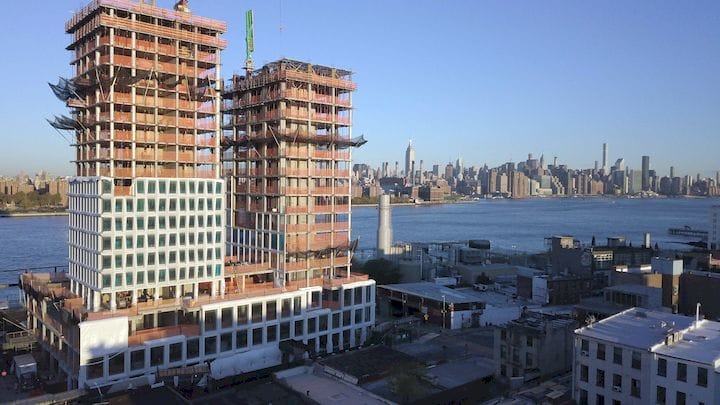![A NYC skyscraper used 3D printing during construction [Source: Gate Precast]](https://fabbaloo.com/wp-content/uploads/2020/05/image-asset_img_5eb09aba6b45c.jpg)
A construction project in Brooklyn is leveraging 3D printing the very practical way.
The Domino tower, currently under construction and expected to be completed next year, has used 3D printed molds to cast concrete components used at the building site.
You’d think this is an obvious solution, but it really hasn’t taken off yet for several reasons. One of those reasons certainly is the fact that construction crews have never heard of this approach. That problem has faced every industry that has so far adopted 3D printing, and construction will be no different.
It turns out that it is not as simple matter as you might expect. You cannot just print a mold and use it to cast concrete. In fact researchers at ORNL worked with the project to develop a technology that could successfully be used.
That technology turns out to be large-format 3D prints using carbon fiber-reinforced ABS thermoplastic. Using a standard ABS thermoplastic was apparently unsuccessful because the tremendous weight of the concrete could distort the much weaker ABS material. The ORNL researchers developed a system that would work not only once but over many cycles of casting parts.
For this project they produced several large molds in this material, taking about 8 to 11 hours each to print. However, as any experienced 3D print operator would know, such a print would have an extremely coarse surface texture. 3D printing objects of this size, that is bigger than a full-sized office window, could take weeks using standard 3D printing approaches. To do so in under 12 hours as they have done would necessitate the use of very large diameter nozzles, which would result in very thick extrusions.
![Concrete building components made from 3D printed molds [Source: Oak Ridge National Laboratory]](https://fabbaloo.com/wp-content/uploads/2020/05/building-casts_result_img_5eb09aba96f8b.jpg)
The report on this project indicates they required another eight hours to post-process the surface for a suitably smooth finish. Then they could commence actual concrete casting.
For this project they found such molds were capable of being used around 200 times. Therefore to complete the project, which required hundreds of these casts, multiple molds had to be produced.
This form of casting could easily have been done through conventional means but it seems there was an advantage to doing it with 3D printing. The normal approach would be to have specialized carpenters construct strong wooden molds to hold the concrete. But it turns out that such carpenters are not too easy to find these days, whereas 3D printing equipment is becoming more easily available.
From the looks of this project it seemed quite amenable to this approach. For example, there were many hundreds of identical concrete components required. This meant that only a relatively small amount of design in 3D printing was required. It’s quite possible that the components required in other projects might be considerably more varied, necessitating different designs for molds and additional 3D printing.
I’m wondering if it is financially feasible in larger centers of construction just set up a business specializing in this type of work. I could imagine a workflow highly optimized to design, print, post-process, and finally cast concrete components for use in local building projects.
This venture it appears to be a bit of an experiment, but if successful then perhaps such businesses could start appearing in major centers worldwide.











Healthcare 3D printing attempts to solve two problems that plague providing care: customization and cost.